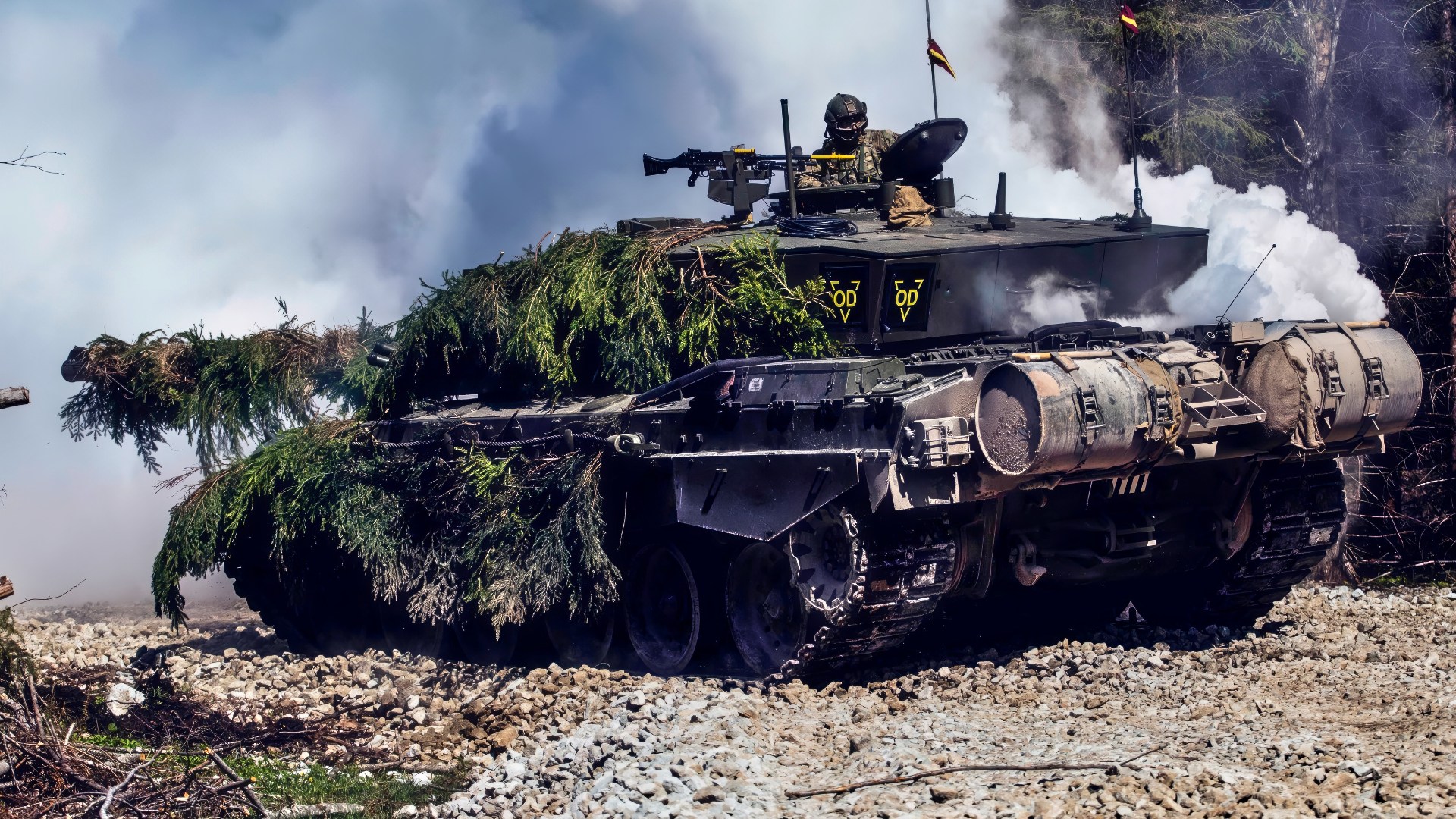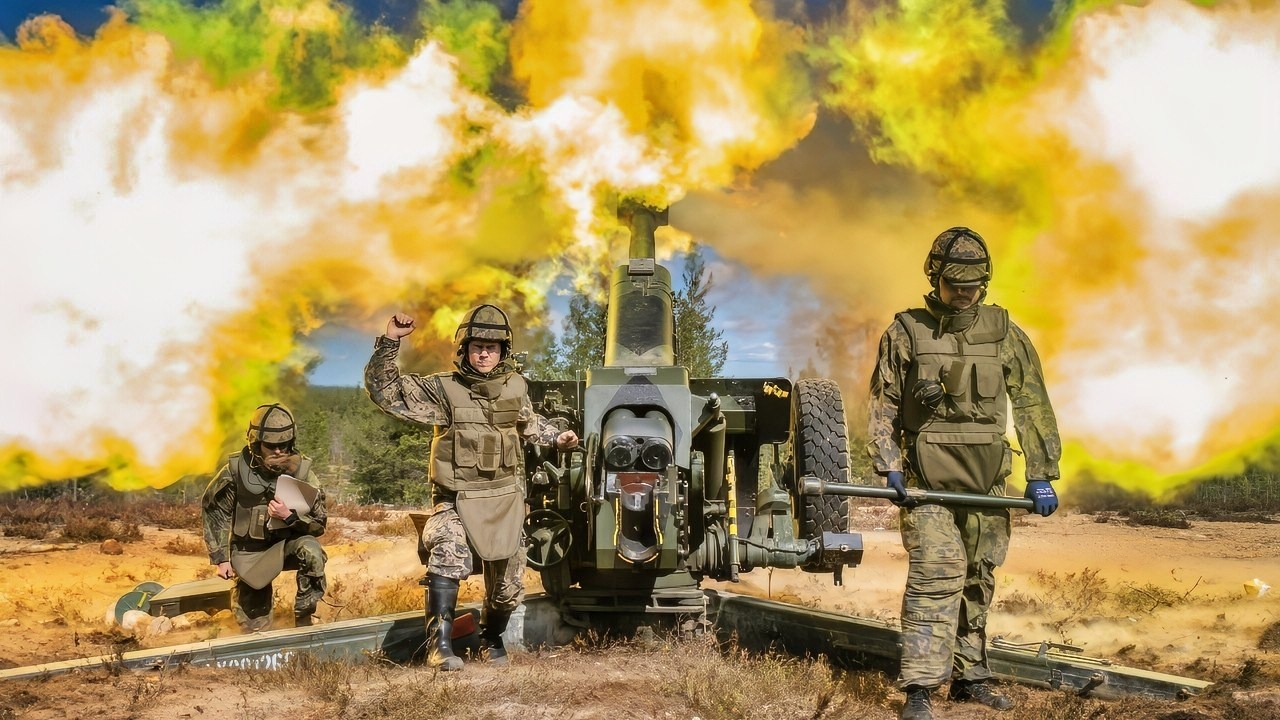Key Points and Summary – The Trump administration’s draft deal to end the Ukraine war leans heavily on “armed neutrality”: a powerful Ukrainian military kept outside NATO, with no formal Western guarantees.
-Dr. Robert Farley from the University of Kentucky argues this formula is inherently unstable and unacceptable to both Kyiv and Moscow.

German soldiers assigned to Surface Air and Missile Defense Wing 1 fire the Patriot weapons system at the NATO Missile Firing Installation (NAMFI) during Artemis Strike Nov. 7 in Chania, Greece. Artemis Strike is a German-led multinational air defense exercise. German soldiers Over 200 U.S. soldiers and approximately 650 German airmen will be participating in the realistic training within a combined construct, exercise the rigors associated with force projection and educate operators on their air missile defense systems. (Photo By Officer Candidate Sebastian Apel, Air Defence Missile Group 24)
-It leaves core disputes unresolved, ensures mutual fear, and virtually guarantees a future clash as each side looks for advantage.
-Armed neutrality demands massive Ukrainian defense spending, depends on volatile economics and technology, and in practice morphs into de facto Western guarantees anyway.
-Farley concludes that any peace built on this concept is likely to fail and disappoint all parties.
Trump’s Ukraine Peace Plan Has a Fatal Flaw: ‘Armed Neutrality’
The draft agreement released by the Trump administration last week to end the Ukraine war shocked many onlookers in both Europe and the United States.
While the proposal may have pushed the conversation on the end of the war forward, it has also left many puzzled regarding its core components.
One particularly important question the agreement seemed to straddle was a long-term debate on the post-war situation. Can armed neutrality, mating a militarily powerful Ukraine with a pledge to remain outside the NATO alliance, bring stability to the Moscow-Kyiv relationship? Or are security guarantees from powerful Western countries needed to deter a future conflict?
NATO at Arms Length
Some American analysts see armed neutrality as the only way out of the war that protects the security interests of both Ukraine and Russia.
Armed neutrality would end the encroachment of the NATO alliance upon Russia’s heartland while also preserving Ukrainian military power and consequent ability to deter further Russian aggression.
As envisioned by Stephen Wertheim, Emma Ashford, and others, this is a future in which the United States and Europe assist Ukraine in “building a large, advanced army and a formidable defense industrial base with extensive external support,” giving Ukraine the capacity to deter Russia on its own, and thus eliminating the need for Europe or the United States to guarantee Ukraine’s security formally. The draft agreement establishes a foundation of armed neutrality, allowing a Ukrainian Army of 600,000, while also forcing Ukraine and NATO to establish legal barriers to future accession.
Armed Neutrality and Security
So far, so good. But peace agreements are about preventing future wars, and as a recipe for minimizing the chance of war between Russia and Ukraine, the armed neutrality formula fails badly. “Armed neutrality” has been unacceptable to both Kyiv and Moscow and for good reason; it is very nearly a guarantee of future conflict between the two countries.
It leaves key questions of national interest unresolved for both Kyiv and Moscow; the recovery of lands lost in the war for the former, and the disarmament and deNazification of the Kyiv regime for the latter. The resumption of normal economic and cultural contacts, which often serve as a brake on war, is equally improbable in the near term.
Moreover, given the damage and destruction inflicted by both sides, it is difficult to imagine the establishment of cordial relations in the foreseeable future. Consequently, both sides have abundant reasons for restarting the war at a convenient moment.

A Swedish Marine with the 2nd Amphibious Battalion, 1st Marine Regiment reloads an Automatkarbin 5 service rifle during a live fire range as part of exercise Archipelago Endeavor 25 in Berga, Sweden, Aug. 28, 2025. Exercise Archipelago Endeavor 25 increases compatible interoperability between the U.S. Marine Corps and Swedish Amphibious Forces by executing combined amphibious operations in and around the Baltic Sea littorals. (U.S. Marine Corps photo by Lance Cpl. Frank Sepulveda Torres)
The security dilemma looms over these negotiations. Ukrainian concerns are obvious; if the end of the war enables Russia to consolidate its gains and work its way back into the international economy, Moscow could initiate another conflict on more favorable terms.
But Moscow has also not displayed a sense of humor regarding the idea of a Ukraine with a “large, advanced army and a formidable defense industrial base with extensive external support.”
The damage inflicted by Russia since 2014 has virtually ensured the virulent hostility of any democratic Ukrainian government towards Russia, a situation that most any country in the world would regard as a core security threat.
This reality is not lost upon the Russian national security apparatus, which is why Russia launched a war in February of 2022 intended to replace the Ukrainian government and permanently degrade Ukraine’s warmaking capacity.
Potential for Peace
These demands helped scuttle the March 2022 peace negotiations, and Moscow has not substantially wavered in them since then.
The reasons for this are clear; Moscow is absolutely not wrong that a powerful, revanchist Ukraine with a territorial grudge would present a significant threat to its security.
Russia Has a History of Being Invaded
But aren’t Russian concerns over Ukrainian military power specious? Russia is a very large, very powerful country, and yet has been attacked many times by smaller, less powerful countries during its modern history.
In 1904, Japan attacked Russia; in 1918, Poland attacked the Soviet Union; in 1939, Japan attacked the Soviet Union; in 1941, Germany attacked the Soviet Union; in 1991, Chechnya violently asserted its independence from Russia; in 2008, Georgia attacked Russian-backed separatists; after 2014 Ukraine pursued a low-level war of attrition against Russian proxies in occupied Ukrainian territory.

A British Army Challenger 2 Main Battle Tank (MBT) lays down a smoke screen during Spring Storm 19, Estonia’s largest annual military exercise. Roughly 9,000 soldiers from Estonia, other NATO Allies and partner nations have gathered near the town of Jõhvi to engage in a collective defence exercise, strengthening their ability to work together in times of crisis.
The fluidity of Russian politics has created opportunities that neighbors want to, or feel they need to, take care of.
In short, to suggest that Russia would somehow find a militarily powerful Ukraine on its border tolerable is not credible; in such a context, both Russia and Ukraine would constantly seek opportunities to wrongfoot the other, likely leading to a rapid renewal of conflict.
The Uncertainty of Armed Neutrality
There are more general reasons why very few countries prefer armed neutrality to security guarantees.
Armed neutrality does not resolve the problems of uncertainty associated with security guarantees, because internal balancing depends on economic and technological factors that may vary over time.
Economic crises may force a reduction in defense spending or may make it impossible to maintain levels of armaments to the degree necessary to establish deterrence.
Changes in technology may give one side a sudden advantage, and consequently a temptation to exploit that advantage. Armed neutrality is, in short, a high-risk and deeply unstable choice, as the experiences of Israel and India have indicated.
Moreover, armed neutrality can be quite unpleasant for its practitioners. Ukraine will essentially need to keep up with Russia in terms of military spending, which, given Ukraine’s relatively small size, will require the commitment of an enormous portion of national resources to defense. Indeed,
Ukraine may struggle to keep a six-hundred-thousand-man force armed and equipped. Of course, the generosity of Ukraine’s friends and partners can ameliorate some of this burden, although at some point, generosity simply becomes a security guarantee by a different name.
What Happens Now in Ukraine?
Some states manage with armed neutrality, at least for a while. Sweden undertook a sort of armed neutrality during the Cold War, but only at great expense and in the knowledge that any Russian attack would probably incur a NATO reaction even in the absence of explicit security guarantees.
Vietnam embraced armed neutrality out of necessity after the Sino-Vietnamese War. Finally, the example of Israel makes the folly of armed neutrality abundantly clear. Israel has enjoyed greater or lesser military support from a variety of patrons since its inception.
It has neither been a member of a multilateral military alliance nor enjoyed the benefits of a security guarantee for most of its existence.
Despite this, Israel’s relations with its neighbors have been characterized by war and the almost continuous threat of war, up to and including the attacks of October 7. Unfortunately, a peace between Russia and Ukraine that depends upon armed neutrality as its key mechanism is destined to disappoint everyone.
About the Author: Dr. Robert Farley
Dr. Robert Farley has taught security and diplomacy courses at the Patterson School since 2005. He received his BS from the University of Oregon in 1997, and his Ph. D. from the University of Washington in 2004. Dr. Farley is the author of Grounded: The Case for Abolishing the United States Air Force (University Press of Kentucky, 2014), the Battleship Book (Wildside, 2016), Patents for Power: Intellectual Property Law and the Diffusion of Military Technology (University of Chicago, 2020), and most recently Waging War with Gold: National Security and the Finance Domain Across the Ages (Lynne Rienner, 2023). He has contributed extensively to a number of journals and magazines, including the National Interest, the Diplomat: APAC, World Politics Review, and the American Prospect. Dr. Farley is also a founder and senior editor of Lawyers, Guns and Money.
